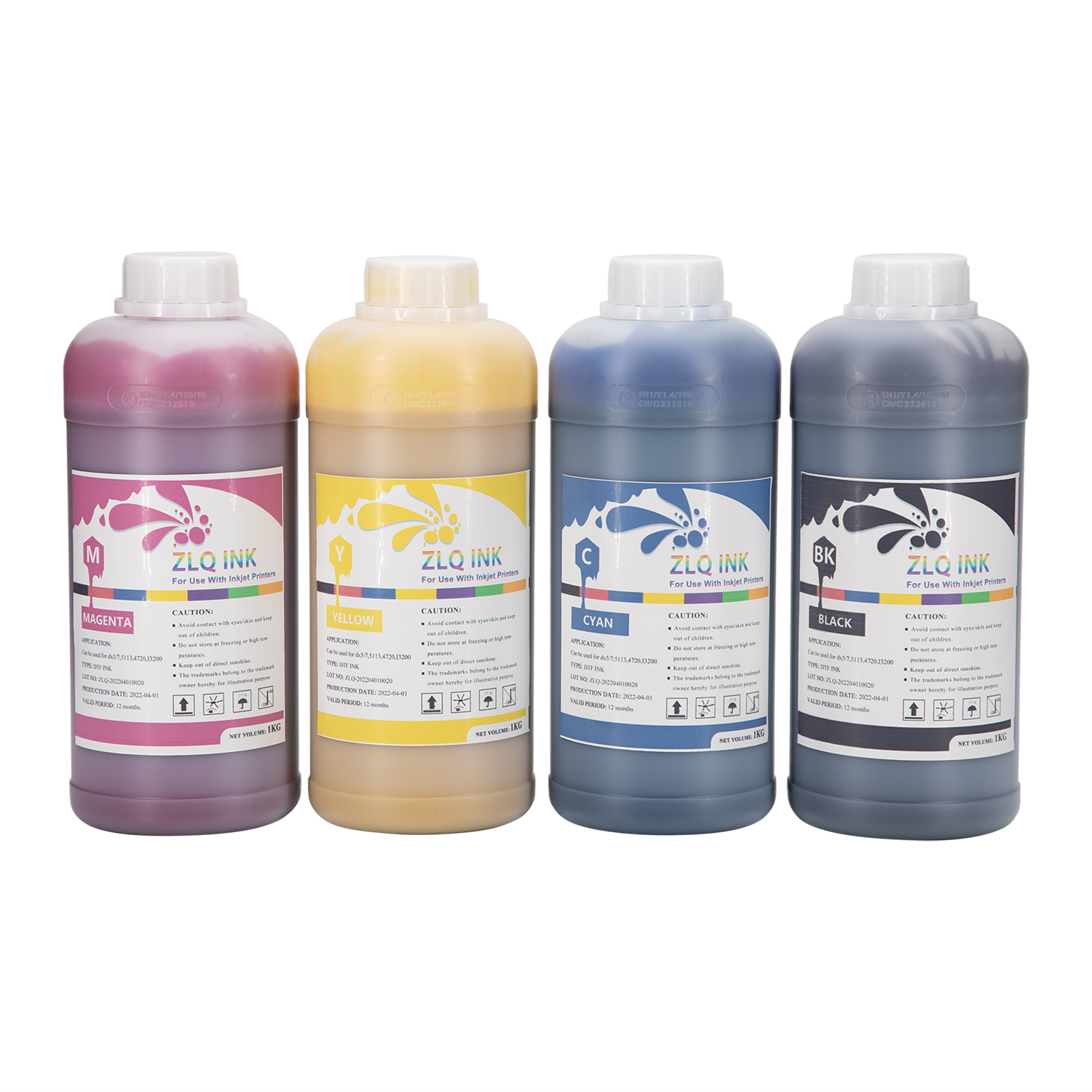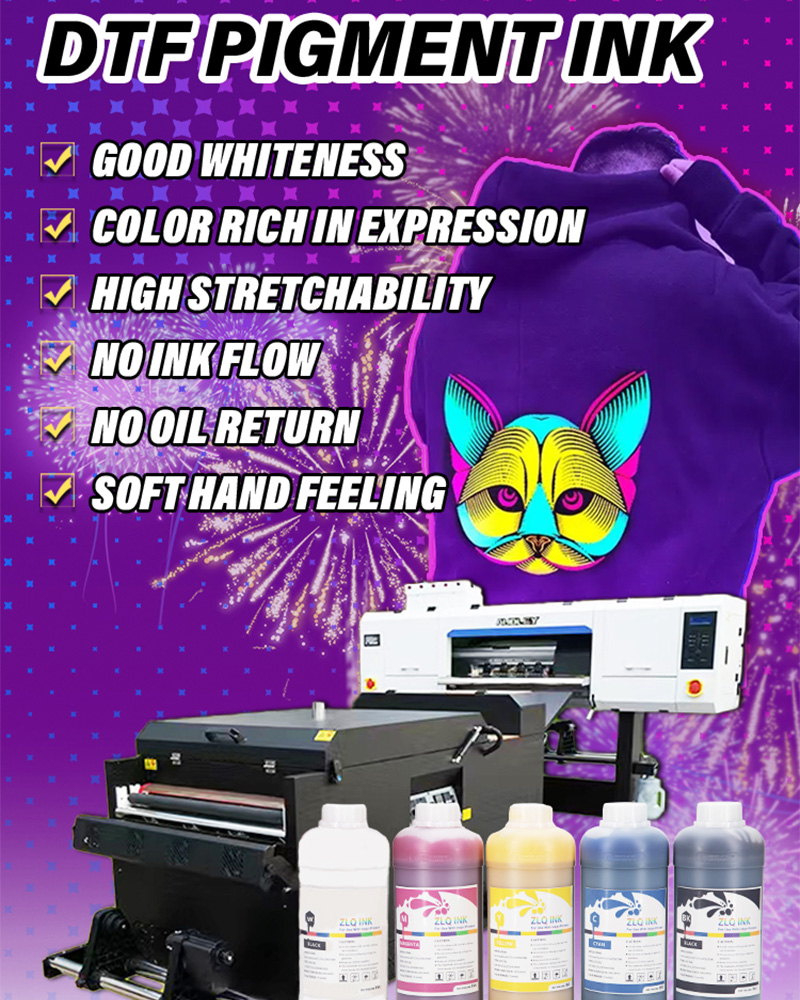

• Market demand continues to grow:
• Apparel and textile industry drive: In the field of apparel and textiles, consumers' demand for personalized and customized products continues to increase. DTF ink can meet the high-quality printing of various complex patterns and colors, and can be applied to a variety of clothing such as T-shirts, sportswear, underwear, and home textiles. For example, in order to launch unique limited edition series, some fashion brands will use DTF ink for personalized pattern printing to meet consumers' pursuit of uniqueness.
• Advertising and promotion market expansion: In the field of advertising and promotion, there is a strong demand for creative and personalized display. DTF ink can be printed on a variety of materials, such as posters, flags, display props, etc., providing more design possibilities and visual impact for advertising and promotion activities.
• Technological innovation improves performance:
• Better color performance: In the future, the color accuracy, vividness and stability of DTF ink will continue to improve. R&D personnel will strive to develop ink formulas that can present a wider color gamut and more delicate color transitions, making the colors of printed products more realistic and vivid, meeting the needs of reproduction of artworks with extremely high color requirements and printing of high-end photographic works.
• Faster printing speed: With the continuous advancement of printing technology, the printing speed of DTF ink is expected to increase further. Faster printing speed can meet the needs of large-scale production, improve production efficiency and reduce unit cost, which is crucial for commercial printing and industrial production. For example, some new DTF printing equipment has achieved higher printing speeds by optimizing nozzle design, ink supply system, etc.
• Enhanced compatibility with different materials: In addition to being used on common textiles, DTF ink will continue to expand its range of applicable materials. Ink formulas suitable for more special materials such as leather, metal, plastic, etc. may be developed to provide solutions for product decoration and printing in more industries.
• Environmental protection and sustainability become key:
• Low-pollution ink formula: Against the background of increasing environmental awareness, the development of low-pollution and environmentally friendly DTF inks will be an important trend. For example, adopting water-based ink formulas can reduce the use of organic solvents and reduce potential harm to the environment and human health. At the same time, reduce the emission of pollutants during the production, use and disposal of inks.
• Application of recyclable and renewable materials: Materials that match DTF inks, such as printing films, will also develop in the direction of recyclability and renewable. This will help reduce resource waste and reduce the environmental impact of the entire production process.
• Integration of intelligence and digitalization:
• Connection with the Internet of Things: DTF printing equipment may be further integrated with the Internet of Things technology to achieve remote monitoring, fault warning and automated management of equipment. By connecting to the Internet, users can understand the use of ink, the operating status of the equipment, etc. in real time, and improve the efficiency and accuracy of production management.
• Artificial intelligence-assisted color management: Use artificial intelligence technology to manage and optimize colors. For example, through machine learning algorithms, a large amount of color data is analyzed and learned, and the output parameters of the ink are automatically adjusted to obtain the best color effect, reducing the time and error of manual debugging.